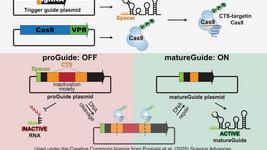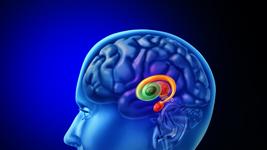Navigating the CAST Landscape: A Review of Mechanisms and Therapeutic Potential
In a recent Trends in Genetics review, Guillermo Montoya and colleagues at the Novo Nordisk Foundation Centre for Protein Research examine CRISPR-Associated Transposons (CASTs) as important emerging tools that address some major drawbacks of current gene-editing technologies (1).
Beginning with an explanation of transposition mechanisms and an overview of bacterial defence systems, the authors discuss the key CAST classes including type I-F CAST systems (utilising TnsA, TnsB, TnsC and TniQ proteins) and type V CAST systems (which uses Cas12k). They highlight the major advantage of using CAST-mediated gene editing. That is the ability to integrate large DNA fragments (10-30 kb) without the need for double-strand breaks, thereby avoiding dependence on cellular DNA repair pathways that can introduce errors or operate inefficiently in non-dividing cells.
The researchers analyse structural insights that reveal how CASTs recognise target sites, recruit transposases, and mediate insertion, all of which will help to facilitate rational optimisation of CASTs for future research and therapeutic applications. Such advances are crucial given that integration efficiency in mammalian cells remains extremly low at around 1%, while integration efficiencies often approach 100% in bacterial applications.
The authors conclude by addressing remaining questions about CAST systems, including targeting specificity, efficiency across different cell types, and delivery methods needed for therapeutic applications in gene therapy and synthetic biology.
This review is particularly timely, coming only days after David Liu and colleagues published their breakthrough evoCAST system in Science (2). Using directed evolution, Liu's team has enhanced CRISPR-associated transposases to achieve 10-30% targeted integration in human cells without double-strand breaks, supporting insertion of >10 kb payloads while maintaining high precision. This advancement represents a significant step toward mutation-agnostic therapeutic approaches for loss-of-function diseases, with broad implications for gene therapy, immunoengineering, and synthetic biology.
References
- Tenjo-Castaño F, Rout SS, Dey S, Montoya G. Unlocking the potential of CRISPR-associated transposons: from structural to functional insights. Trends Genet. 2025 Apr;xx(xx):1-18.
- Witte IP, Lampe GD, Eitzinger S, et al. Programmable gene insertion in human cells with a laboratory-evolved CRISPR-associated transposase. Science. 2025 May 15;388(6748):eadt5199.
To get more CRISPR Medicine News delivered to your inbox, sign up to the free weekly CMN Newsletter here.
Tags
CLINICAL TRIALS
Sponsors:
Base Therapeutics (Shanghai) Co., Ltd.
Sponsors:
Base Therapeutics (Shanghai) Co., Ltd.







